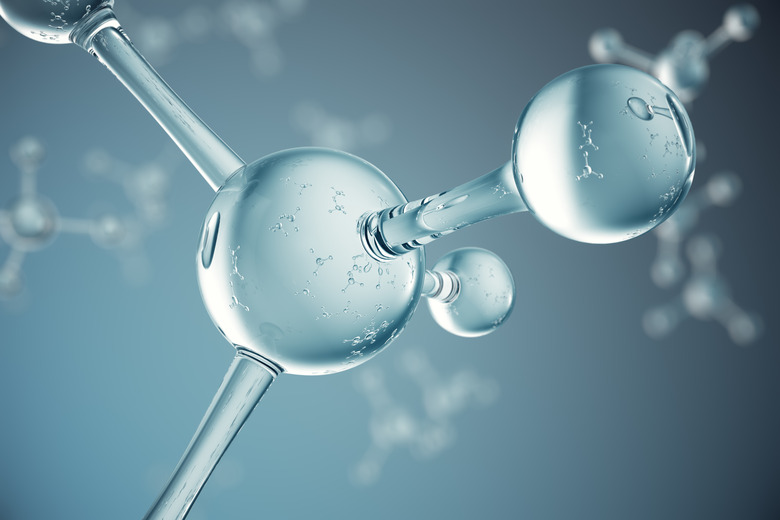What Are The Four Organic Molecules Found In Living Things?
Living things are made of four types of molecules, known as macromolecules. These macromolecules are proteins, nucleic acids (DNA and RNA), lipids (fats) and carbohydrates. Each type of macromolecule is made of its own building blocks, which are intricately connected to form different shapes.
The special properties and shape of each kind of macromolecule are what make it especially suited for what it does. Proteins are machines that make and break other molecules. Nucleic acids carry genetic information that can be passed down to offspring. Lipids form barriers against water. Carbohydrates can be easily broken down for energy.
TL;DR (Too Long; Didn't Read)
There are four macromolecules that make up living organisms: proteins, nucleic acids, fats and carbohydrates.
Proteins: Molecular Machines
Proteins: Molecular Machines
Proteins, made up of amino acids, are the molecular machines that do the day-to-day work of the cell. Highly specialized at what they do, proteins form both the railways and the motors that pull cargo along inside of a cell. They form the internal skeleton that gives a cell its shape: like the frame of a house.
The enzymes that make and break chemical bonds in the cell are also proteins. These speed up chemical reactions in the cell: enzymes both build new molecules, and break chemical bonds to recycle molecules.
Nucleic Acids: Information Repositories
Nucleic Acids: Information Repositories
If proteins are the workforce of the cell, then DNA is the brains of the cell. DNA, a double-stranded molecule made of linked nucleic acids, carries the genetic information for making all four types of macromolecules in cells. The information in DNA is copied into another nucleic acid, called RNA, which is like a mirror image of DNA. Like encoding one language into another, RNA is translated into protein.
While RNA is also made of linked nucleic acids, it exists as a single strand, and has a special building block not found in DNA. The structure of DNA can be thought of as a rope ladder, while that of RNA is like a rope that has knots along the way that make it easier to climb.
Lipids: Waterproof Membranes
Lipids: Waterproof Membranes
Lipids are a category of oily molecules that include fatty acids and cholesterol. Fatty acids make up cooking oil and butter, and cholesterol is the source for steroid hormones and vitamin D. Lipids that come from fatty acids or cholesterol vary greatly in shape, but they share the property of not mixing well with water.
This "fear" of water is why these molecules are called nonpolar; whereas, water and water-loving molecules are said to be polar. Fatty acids are great for forming cell membranes because water has a hard time passing through an oily membrane. Cells would not exist as distinct objects with a size and border if it were not for lipids in membranes.
Carbohydrates: Stored Energy
Carbohydrates: Stored Energy
Carbohydrates are sugars. A carbohydrate can take the form of a simple sugar, such as table sugar, or the long fibers that are part of wood. Carbohydrates are made of building blocks called monosaccharides. Table sugar, called sucrose, is formed by the joining the two monosaccharides glucose and fructose. Plants make glucose from carbon dioxide and water, using light energy, during photosynthesis.
Sugars are great for storing energy, since they are easily broken down by a cell to produce the energy molecules ATP. However, monosaccharides can also be linked to form strong fibers that strengthen the walls of plant cells.
References
Cite This Article
MLA
Ph.D., David H. Nguyen,. "What Are The Four Organic Molecules Found In Living Things?" sciencing.com, https://www.sciencing.com/four-organic-molecules-found-living-things-22326/. 26 April 2018.
APA
Ph.D., David H. Nguyen,. (2018, April 26). What Are The Four Organic Molecules Found In Living Things?. sciencing.com. Retrieved from https://www.sciencing.com/four-organic-molecules-found-living-things-22326/
Chicago
Ph.D., David H. Nguyen,. What Are The Four Organic Molecules Found In Living Things? last modified August 30, 2022. https://www.sciencing.com/four-organic-molecules-found-living-things-22326/
